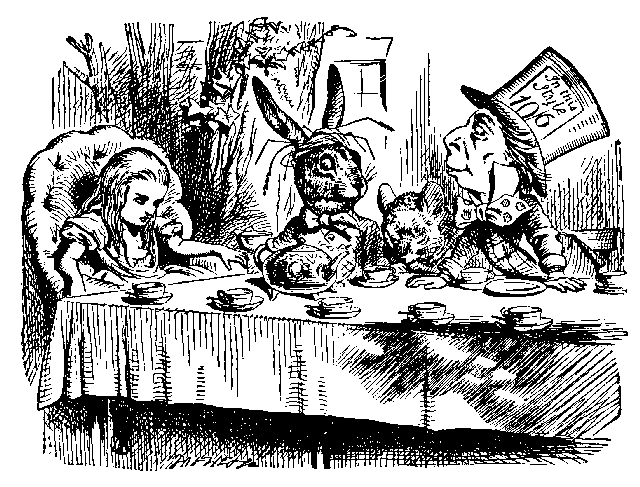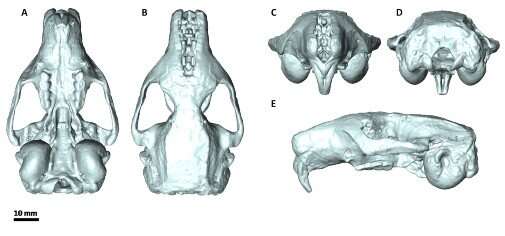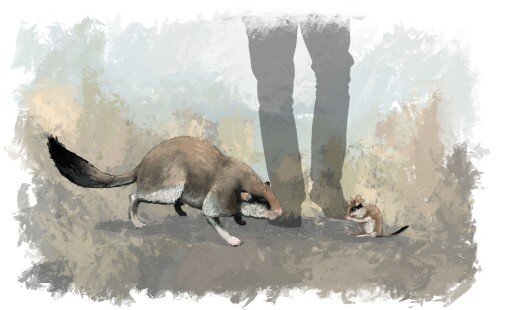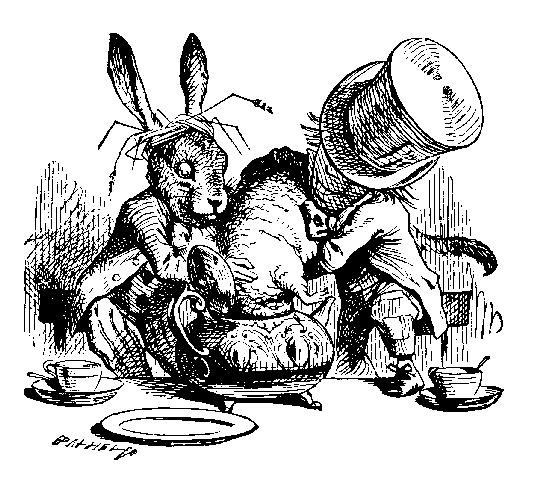To combat COVID-19, we need to regulate our immune systems to resemble those of bats
IT'S BAT FLU

Bats carry many viruses, including COVID-19, without becoming ill. Biologists are studying the immune system of bats to find potential ways to 'mimic' that system in humans.
Date:July 9, 2020
Bats are often considered patient zero for many deadly viruses affecting humans, including Ebola, rabies, and, most recently, the SARS-CoV-2 strain of virus that causes coronavirus.
Although humans experience adverse symptoms when afflicted with these pathogens, bats are remarkably able to tolerate viruses, and, additionally, live much longer than similar-sized land mammals.
What are the secrets to their longevity and virus resistance?
According to researchers at the University of Rochester, bats' longevity and capacity to tolerate viruses may stem from their ability to control inflammation, which is a hallmark of disease and aging. In a review article published in the journal Cell Metabolism, the researchers -- including Rochester biology professors Vera Gorbunova and Andrei Seluanov -- outline the mechanisms underlying bats' unique abilities and how these mechanisms may hold clues to developing new treatments for diseases in humans.
Why are bats 'immune' to viruses?
The idea for the paper came about when Gorbunova and Seluanov, who are married, were in Singapore in March before COVID-19 travel bans began. When the virus started to spread and Singapore went into lockdown, they were quarantined at the home of their colleague Brian Kennedy, director of the Centre for Healthy Aging at the National University of Singapore and co-author of the paper.
The three scientists, all experts on longevity in mammals, got to talking about bats. SARS-CoV-2 is believed to have originated in bats before the virus was transmitted to humans. Although bats were carriers, they seemed to be unaffected by the virus. Another perplexing factor: generally, a species' lifespan correlates with its body mass; the smaller a species, the shorter its lifespan, and vice versa. Many bat species, however, have lifespans of 30 to 40 years, which is impressive for their size.
"We've been interested in longevity and disease resistance in bats for a while, but we didn't have the time to sit and think about it," says Gorbunova, the Doris Johns Cherry Professor of Biology at Rochester. "Being in quarantine gave us time to discuss this, and we realized there may be a very strong connection between bats' resistance to infectious diseases and their longevity. We also realized that bats can provide clues to human therapies used to fight diseases."
While there have been studies on the immune responses of bats and studies of bats' longevity, until their article, "no one has combined these two phenomena," Seluanov says.
Gorbunova and Seluanov have studied longevity and disease resistance in other exceptionally long-lived animals, including naked mole rats. One common theme in their research is that inflammation is a hallmark of the aging process and age-related diseases, including cancer, Alzheimer's, and cardiovascular disease. Viruses, including COVID-19, are one factor that can trigger inflammation.
"With COVID-19, the inflammation goes haywire, and it may be the inflammatory response that is killing the patient, more so than the virus itself," Gorbunova says. "The human immune system works like that: once we get infected, our body sounds an alarm and we develop a fever and inflammation. The goal is to kill the virus and fight infection, but it can also be a detrimental response as our bodies overreact to the threat."
Not so with bats. Unlike humans, bats have developed specific mechanisms that reduce viral replication and also dampen the immune response to a virus. The result is a beneficial balance: their immune systems control viruses but at the same time, do not mount a strong inflammatory response.
Why did bats acquire a tolerance for diseases?
According to the researchers, there are several factors that may contribute to bats having evolved to fight viruses and live long lives. One factor may be driven by flight. Bats are the only mammals with the ability to fly, which requires that they adapt to rapid increases in body temperature, sudden surges in metabolism, and molecular damage. These adaptations may also assist in disease resistance.
Another factor may be their environment. Many species of bats live in large, dense colonies, and hang close together on cave ceilings or in trees. Those conditions are ideal for transmitting viruses and other pathogens.
"Bats are constantly exposed to viruses," Seluanov says. "They are always flying out and bringing back something new to the cave or nest, and they transfer the virus because they live in such close proximity to each other."
Because bats are constantly exposed to viruses, their immune systems are in a perpetual arms race with pathogens: a pathogen will enter the organism, the immune system will evolve a mechanism to combat the pathogen, the pathogen will evolve again, and so on.
"Usually the strongest driver of new traits in evolution is an arms race with pathogens," Gorbunova says. "Dealing with all of these viruses may be shaping bats' immunity and longevity."
Can humans develop the same disease resistance as bats?
That's not an invitation for humans to toss their masks and crowd together in restaurants and movie theaters. Evolution takes place over thousands of years, rather than a few months. It has only been in recent history that a majority of the human population has begun living in close proximity in cities. Or that technology has enabled rapid mobility and travel across continents and around the globe. While humans may be developing social habits that parallel those of bats, we have not yet evolved bats' sophisticated mechanisms to combat viruses as they emerge and swiftly spread.
"The consequences may be that our bodies experience more inflammation," Gorbunova says.
The researchers also recognize that aging seems to play an adverse role in humans' reactions to COVID-19.
"COVID-19 has such a different pathogenesis in older people," Gorbunova says. "Age is one of the most critical factors between living and dying. We have to treat aging as a whole process instead of just treating individual symptoms."
The researchers anticipate that studying bats' immune systems will provide new targets for human therapies to fight diseases and aging. For example, bats have mutated or completely eliminated several genes involved in inflammation; scientists can develop drugs to inhibit these genes in humans. Gorbunova and Seluanov hope to start a new research program at Rochester to work toward that goal.
"Humans have two possible strategies if we want to prevent inflammation, live longer, and avoid the deadly effects of diseases like COVID-19," Gorbunova says. "One would be to not be exposed to any viruses, but that's not practical. The second would be to regulate our immune system more like a bat."
make a difference: sponsored opportunity
Journal Reference:
Vera Gorbunova, Andrei Seluanov, Brian K. Kennedy. The World Goes Bats: Living Longer and Tolerating Viruses. Cell Metabolism, 2020; 32 (1): 31 DOI: 10.1016/j.cmet.2020.06.013
Although humans experience adverse symptoms when afflicted with these pathogens, bats are remarkably able to tolerate viruses, and, additionally, live much longer than similar-sized land mammals.
What are the secrets to their longevity and virus resistance?
According to researchers at the University of Rochester, bats' longevity and capacity to tolerate viruses may stem from their ability to control inflammation, which is a hallmark of disease and aging. In a review article published in the journal Cell Metabolism, the researchers -- including Rochester biology professors Vera Gorbunova and Andrei Seluanov -- outline the mechanisms underlying bats' unique abilities and how these mechanisms may hold clues to developing new treatments for diseases in humans.
Why are bats 'immune' to viruses?
The idea for the paper came about when Gorbunova and Seluanov, who are married, were in Singapore in March before COVID-19 travel bans began. When the virus started to spread and Singapore went into lockdown, they were quarantined at the home of their colleague Brian Kennedy, director of the Centre for Healthy Aging at the National University of Singapore and co-author of the paper.
The three scientists, all experts on longevity in mammals, got to talking about bats. SARS-CoV-2 is believed to have originated in bats before the virus was transmitted to humans. Although bats were carriers, they seemed to be unaffected by the virus. Another perplexing factor: generally, a species' lifespan correlates with its body mass; the smaller a species, the shorter its lifespan, and vice versa. Many bat species, however, have lifespans of 30 to 40 years, which is impressive for their size.
"We've been interested in longevity and disease resistance in bats for a while, but we didn't have the time to sit and think about it," says Gorbunova, the Doris Johns Cherry Professor of Biology at Rochester. "Being in quarantine gave us time to discuss this, and we realized there may be a very strong connection between bats' resistance to infectious diseases and their longevity. We also realized that bats can provide clues to human therapies used to fight diseases."
While there have been studies on the immune responses of bats and studies of bats' longevity, until their article, "no one has combined these two phenomena," Seluanov says.
Gorbunova and Seluanov have studied longevity and disease resistance in other exceptionally long-lived animals, including naked mole rats. One common theme in their research is that inflammation is a hallmark of the aging process and age-related diseases, including cancer, Alzheimer's, and cardiovascular disease. Viruses, including COVID-19, are one factor that can trigger inflammation.
"With COVID-19, the inflammation goes haywire, and it may be the inflammatory response that is killing the patient, more so than the virus itself," Gorbunova says. "The human immune system works like that: once we get infected, our body sounds an alarm and we develop a fever and inflammation. The goal is to kill the virus and fight infection, but it can also be a detrimental response as our bodies overreact to the threat."
Not so with bats. Unlike humans, bats have developed specific mechanisms that reduce viral replication and also dampen the immune response to a virus. The result is a beneficial balance: their immune systems control viruses but at the same time, do not mount a strong inflammatory response.
Why did bats acquire a tolerance for diseases?
According to the researchers, there are several factors that may contribute to bats having evolved to fight viruses and live long lives. One factor may be driven by flight. Bats are the only mammals with the ability to fly, which requires that they adapt to rapid increases in body temperature, sudden surges in metabolism, and molecular damage. These adaptations may also assist in disease resistance.
Another factor may be their environment. Many species of bats live in large, dense colonies, and hang close together on cave ceilings or in trees. Those conditions are ideal for transmitting viruses and other pathogens.
"Bats are constantly exposed to viruses," Seluanov says. "They are always flying out and bringing back something new to the cave or nest, and they transfer the virus because they live in such close proximity to each other."
Because bats are constantly exposed to viruses, their immune systems are in a perpetual arms race with pathogens: a pathogen will enter the organism, the immune system will evolve a mechanism to combat the pathogen, the pathogen will evolve again, and so on.
"Usually the strongest driver of new traits in evolution is an arms race with pathogens," Gorbunova says. "Dealing with all of these viruses may be shaping bats' immunity and longevity."
Can humans develop the same disease resistance as bats?
That's not an invitation for humans to toss their masks and crowd together in restaurants and movie theaters. Evolution takes place over thousands of years, rather than a few months. It has only been in recent history that a majority of the human population has begun living in close proximity in cities. Or that technology has enabled rapid mobility and travel across continents and around the globe. While humans may be developing social habits that parallel those of bats, we have not yet evolved bats' sophisticated mechanisms to combat viruses as they emerge and swiftly spread.
"The consequences may be that our bodies experience more inflammation," Gorbunova says.
The researchers also recognize that aging seems to play an adverse role in humans' reactions to COVID-19.
"COVID-19 has such a different pathogenesis in older people," Gorbunova says. "Age is one of the most critical factors between living and dying. We have to treat aging as a whole process instead of just treating individual symptoms."
The researchers anticipate that studying bats' immune systems will provide new targets for human therapies to fight diseases and aging. For example, bats have mutated or completely eliminated several genes involved in inflammation; scientists can develop drugs to inhibit these genes in humans. Gorbunova and Seluanov hope to start a new research program at Rochester to work toward that goal.
"Humans have two possible strategies if we want to prevent inflammation, live longer, and avoid the deadly effects of diseases like COVID-19," Gorbunova says. "One would be to not be exposed to any viruses, but that's not practical. The second would be to regulate our immune system more like a bat."
make a difference: sponsored opportunity
Journal Reference:
Vera Gorbunova, Andrei Seluanov, Brian K. Kennedy. The World Goes Bats: Living Longer and Tolerating Viruses. Cell Metabolism, 2020; 32 (1): 31 DOI: 10.1016/j.cmet.2020.06.013
University of Rochester. "Bats offer clues to treating COVID-19: To combat COVID-19, we need to regulate our immune systems to resemble those of bats." ScienceDaily. ScienceDaily, 9 July 2020. .
Bats harbor a gene swiped from an ancient Ebola-like virus -- here's how they may use it
Bats harbor a gene swiped from an ancient Ebola-like virus -- here's how they may use it
Study suggests that a gene encoding a viral protein has been carefully preserved in Myotis bats for millions of years
Some 18 million years ago, an ancestor of mouse-eared bats 'stole' genetic material from an ancient virus related to Ebola. The swiped genetic sequence -- a gene called VP35 -- has remained largely intact in the bats despite the passage of time, a new study finds. The research also sheds light on the gene's possible function in bats, suggesting that it may play a role in regulating the immune system's response to threats.
Date:July 24, 2018
Source:University at Buffalo
Some 18 million years ago, an ancestor of mouse-eared bats "stole" genetic material from an ancient virus related to Ebola.
The swiped genetic sequence -- a gene called VP35 -- has remained largely intact in the bats despite the passage of time, with few changes since it was co-opted, a new study finds. The research also sheds light on the gene's possible function in bats, suggesting that it may play a role in regulating the immune system's response to threats.
"We're using a multidisciplinary approach to understand the evolution, structure and function of a viral gene co-opted by a mammal," says Derek J. Taylor, PhD, an evolutionary biologist at the University at Buffalo. "From an evolutionary standpoint, it's rare that you can actually see a viral gene sequence like this that has remained intact in a mammalian host. Most of these things are eroded over time -- they get chopped up and shuffled around.
"But VP35 is highly conserved. It's similar in all the bats we looked at, and the bat versions remain very close to what you see in modern Ebola and Marburg viruses. This conservation suggests that the gene has been preserved for an important purpose."
In Ebola and Marburg viruses today, the VP35 gene carries instructions for building a protein that blocks the immune response of infected animals, enabling disease to take hold. When scientists used artificial synthesis to create bat VP35 proteins in the lab, these proteins also acted as immune suppressors, but they were less potent than viral VP35s.
The study answers some important questions, but many mysteries remain. For example: Is the VP35 gene active in mouse-eared bats? Do mouse-eared bats produce any VP35 proteins? If the bats do make VP35 proteins, why is this beneficial?
"Our study explores VP35 function, but further research is needed to determine the specific evolutionary benefit," Taylor says. "Why has this gene been conserved for so long? We don't quite know the answer, and it's possible that VP35 has some other function in bats that we haven't yet discovered."
The study will be published in the journal Cell Reports on July 24, with Megan R. Edwards, PhD, of Georgia State University as first author. The project was led by Christopher F. Basler, PhD, of Georgia State; Daisy W. Leung, PhD, of the Washington University School of Medicine; and Taylor, a professor of biological sciences in the UB College of Arts and Sciences.
Similarities -- and differences -- in bats and in deadly viruses
To understand VP35's evolutionary history, the team compared VP35 sequences in 15 bat species from the genus Myotis (the mouse-eared bats), and used these sequences to reconstruct the archaic version of the gene that was first acquired by the bats' forebear some 18 million years ago.
This analysis showed that VP35 was strikingly similar across all 15 modern bats, modern Ebola and Marburg viruses, and the reconstructed ancestral gene. In other words: VP35 has changed very little in viruses and mouse-eared bats in the last 18 million years. Bolstering this conclusion, researchers discovered that the structure of a Myotis VP35 protein and an Ebola VP35 protein were alike in many ways.
Despite these resemblances, bat and viral forms of VP35 differ in function. Lab tests showed that bat VP35 helps to suppress production of an infection-fighting immune protein called interferon beta, but less effectively than Ebola and Marburg VP35s.
"How could a bat use a viral gene that normally suppresses interferon? While we don't know the exact answer, interferon is associated with inflammation, and it turns out that turning off the inflammation response is an important aspect of immune system function -- prolonged inflammation can be harmful in mammals," Taylor says. "So one possibility is that bats recruited a viral anti-inflammation gene to enhance control of inflammation."
Genetic theft: How it happens and why it matters
The new study was inspired in part by Taylor's prior work on VP35 and other "stolen" viral genes. Known as non-retroviral integrated RNA viral sequences (NIRVs), these co-opted genetic snippets are accidentally inserted into the genomes of infected hosts when a virus like Ebola or Marburg hijacks a host's genetic machinery to replicate.
NIRVs are a gold mine of information. Taylor, one of the first scientists to study them, calls them "scars of infection" and likens them to a "viral fossil record": You can investigate them to learn many fascinating things about the co-evolution of viruses and hosts.
In prior research, Taylor and colleagues used NIRVs to show that filoviruses -- the family housing Ebola and Marburg -- are ancient. The scientists also discovered that several mammals harbor the VP35 NIRV, which was originally acquired from archaic filoviruses that shared a common ancestor with Ebola and Marburg. Species that have this NIRV range from bats to hamsters, voles and wallabies.
The new project builds on this work by exploring VP35's modern function and showing that the gene has been meticulously conserved through evolution in mouse-eared bats.
"NIRVs can tell you something about the timescale of virus-host interactions, and they can tell you something about what types of hosts are being affected by a virus," Taylor says. "Now we're using them in this present study to inform functional studies. NIRVs are a fairly new area of study, and it's exciting to see what else we can learn from them."
Journal Reference:
Megan R. Edwards et al. Conservation of Structure and Immune Antagonist Functions of Filoviral VP35 Homologs Present in Microbat Genomes. Cell Reports, 2018 DOI: 10.1016/j.celrep.2018.06.045
University at Buffalo. "Bats harbor a gene swiped from an ancient Ebola-like virus -- here's how they may use it: Study suggests that a gene encoding a viral protein has been carefully preserved in Myotis bats for millions of years." ScienceDaily. ScienceDaily, 24 July 2018. .







